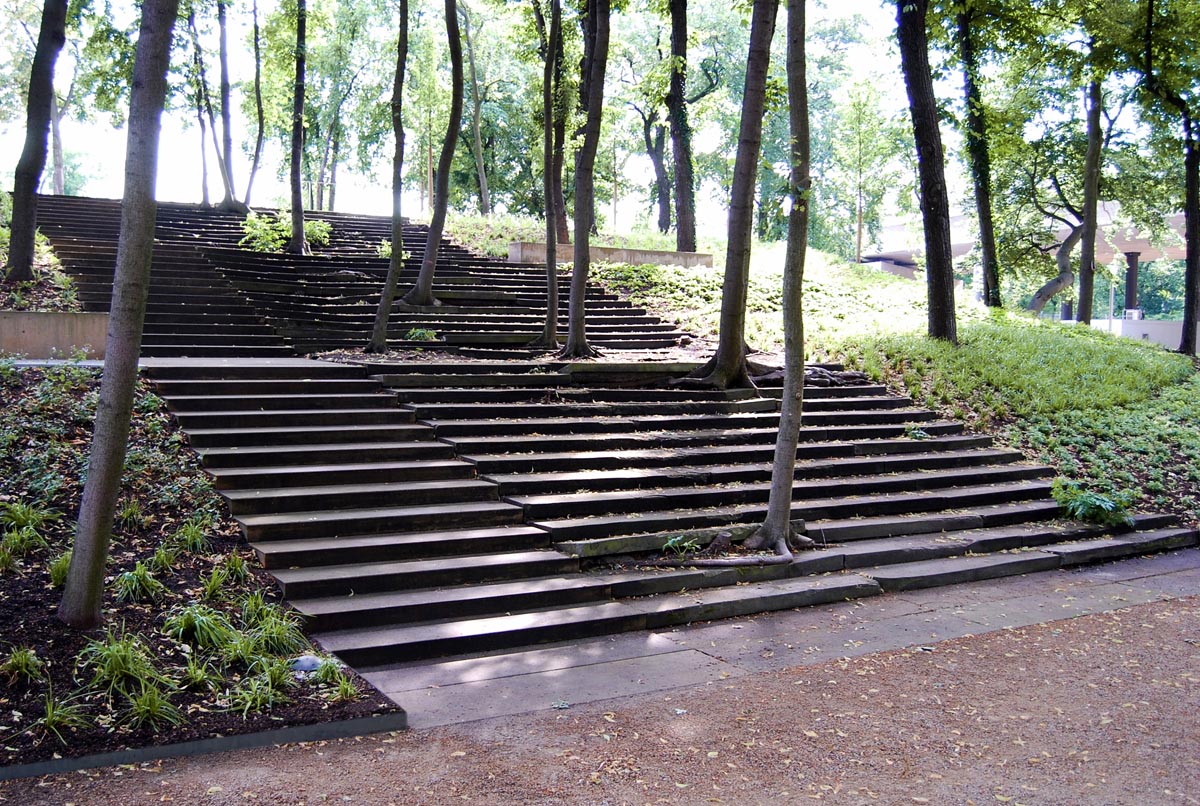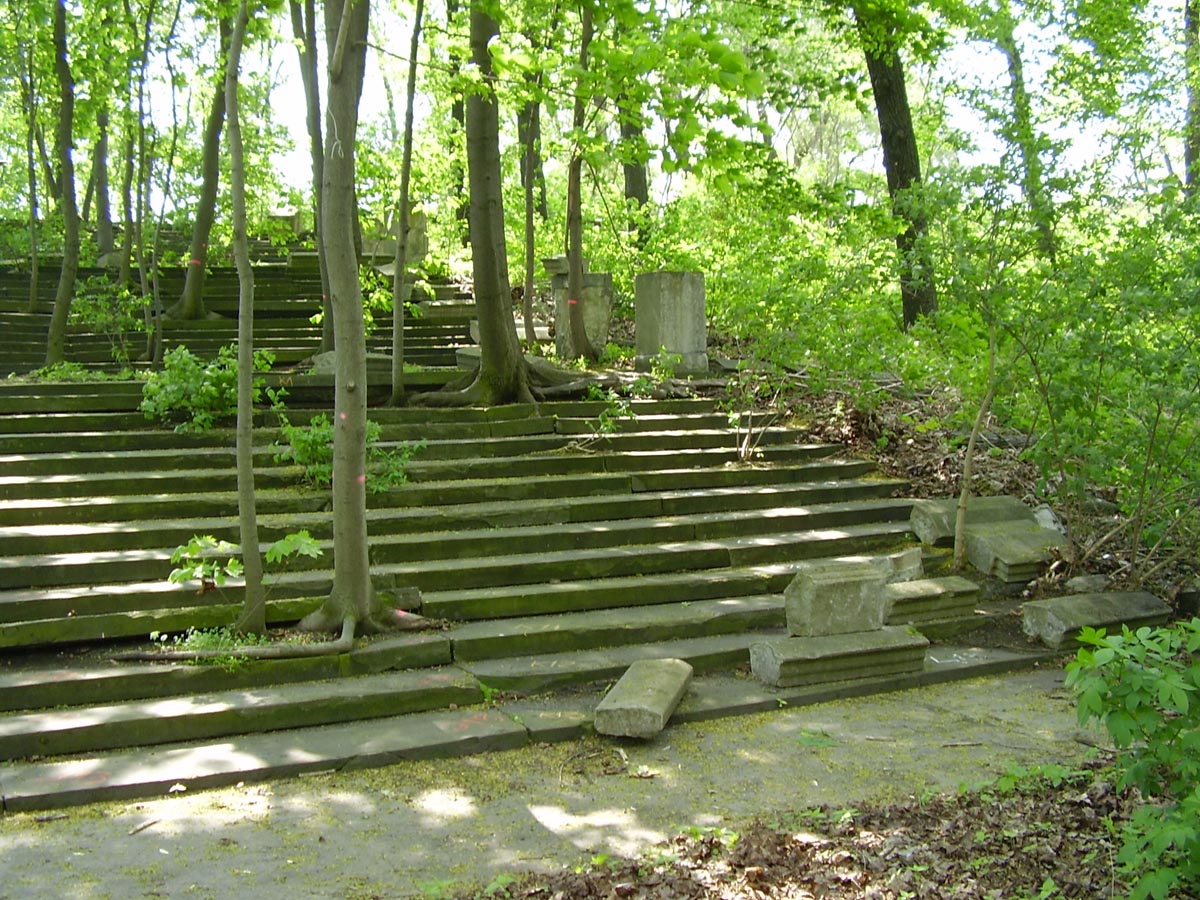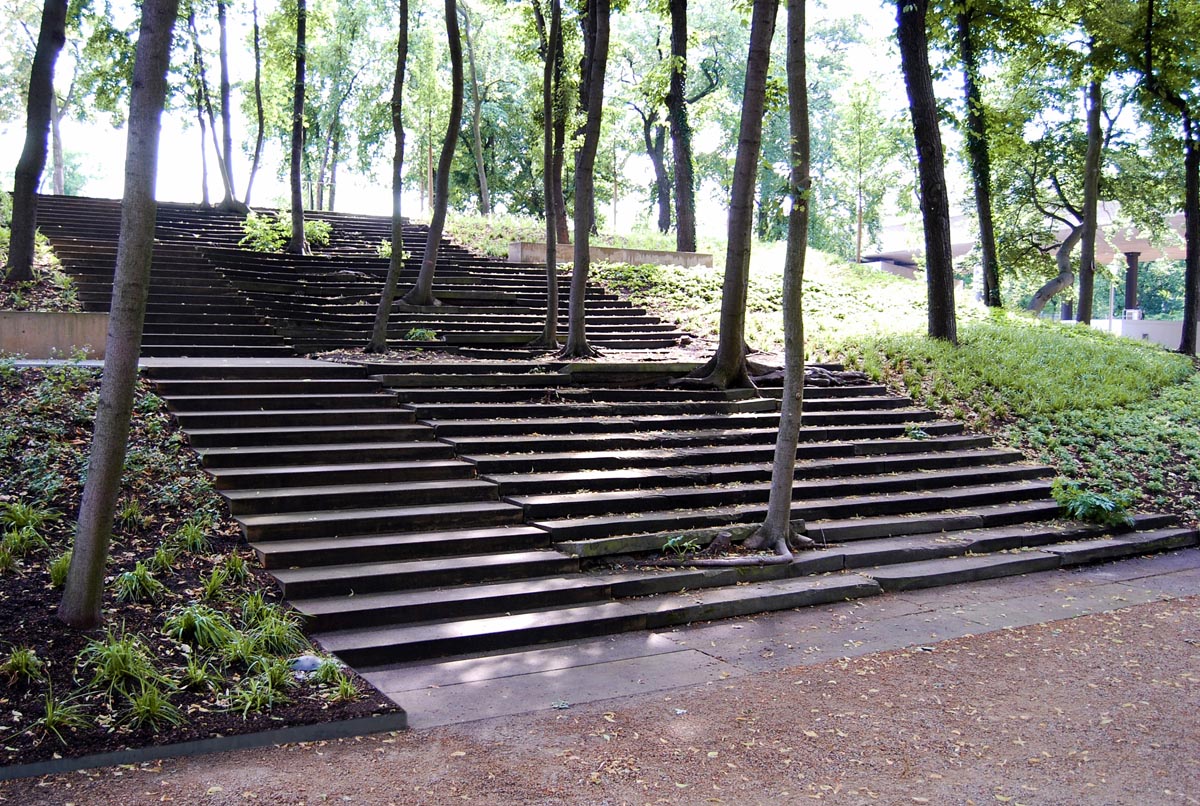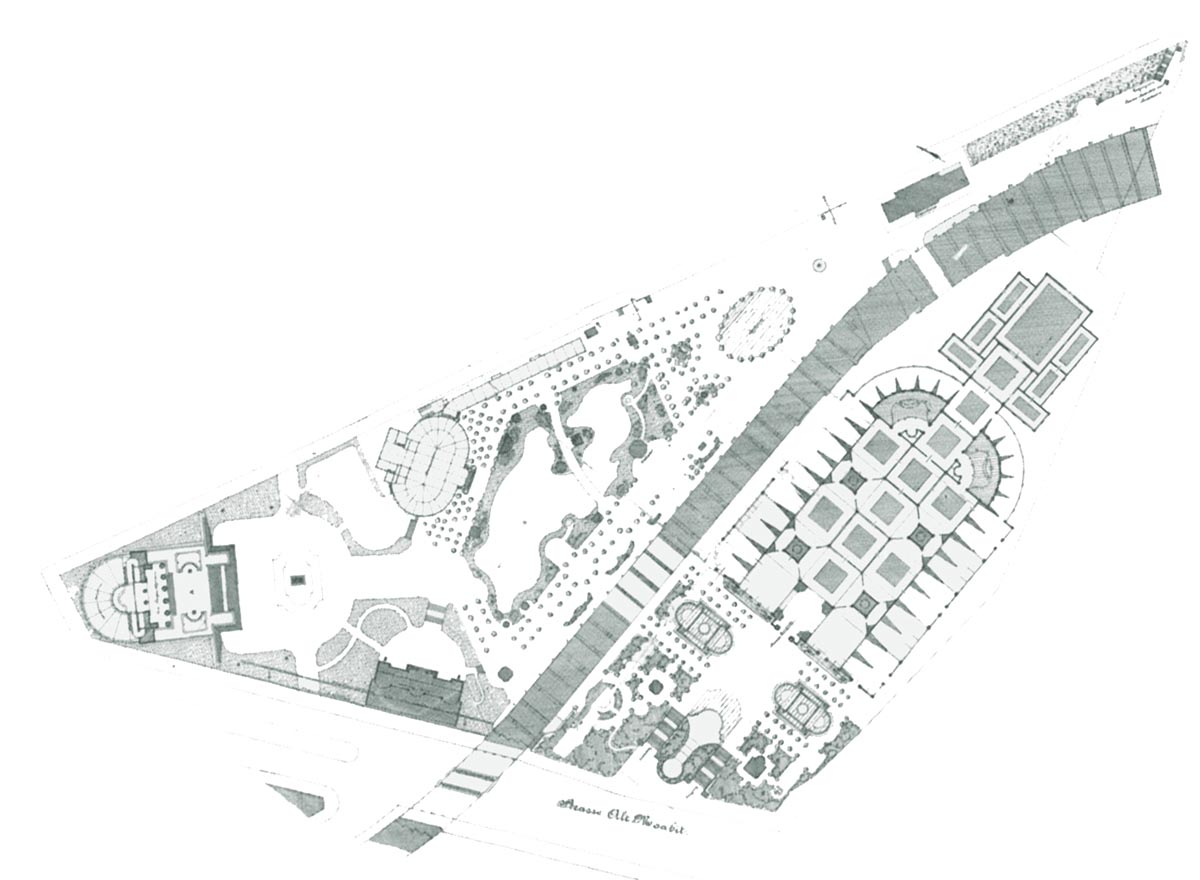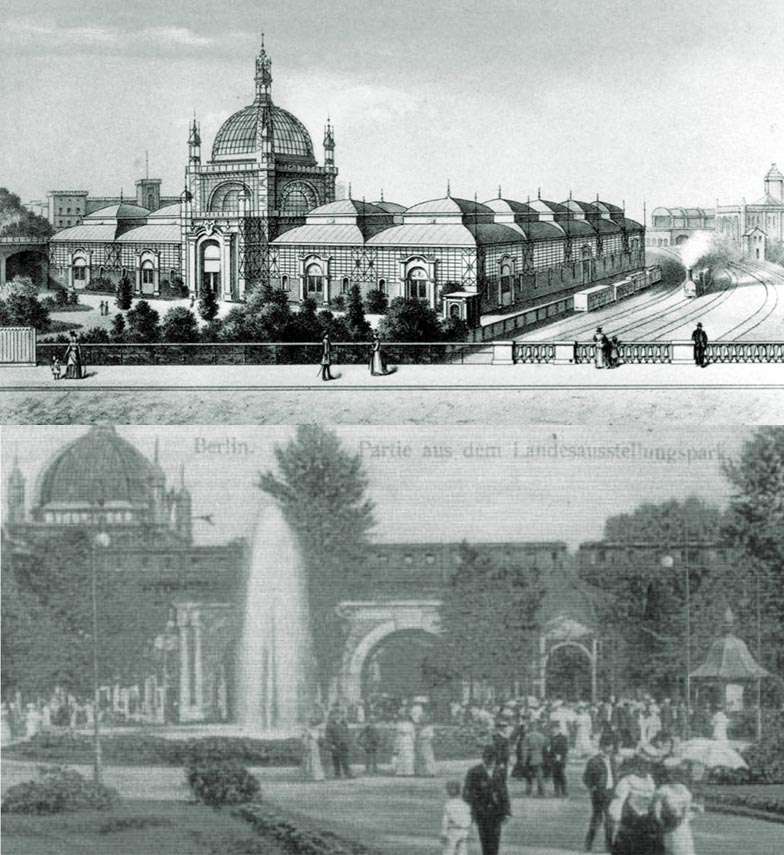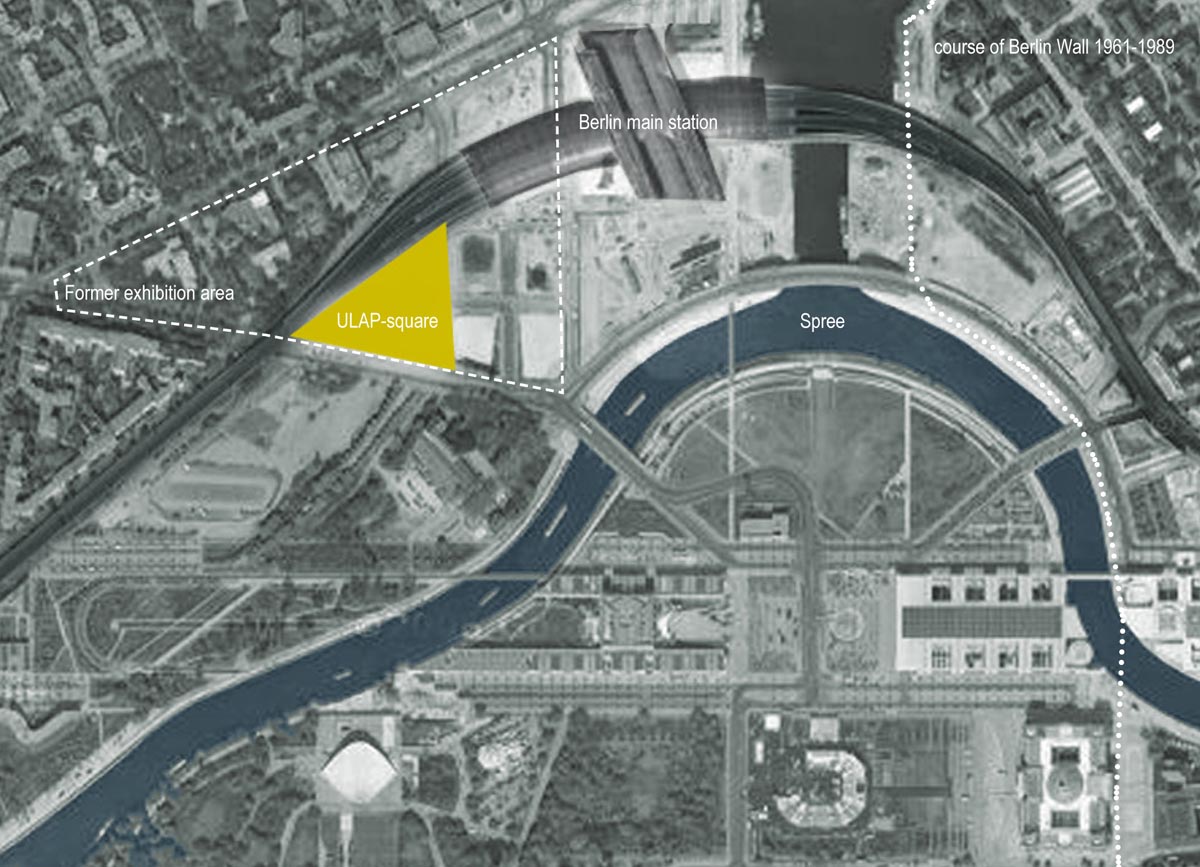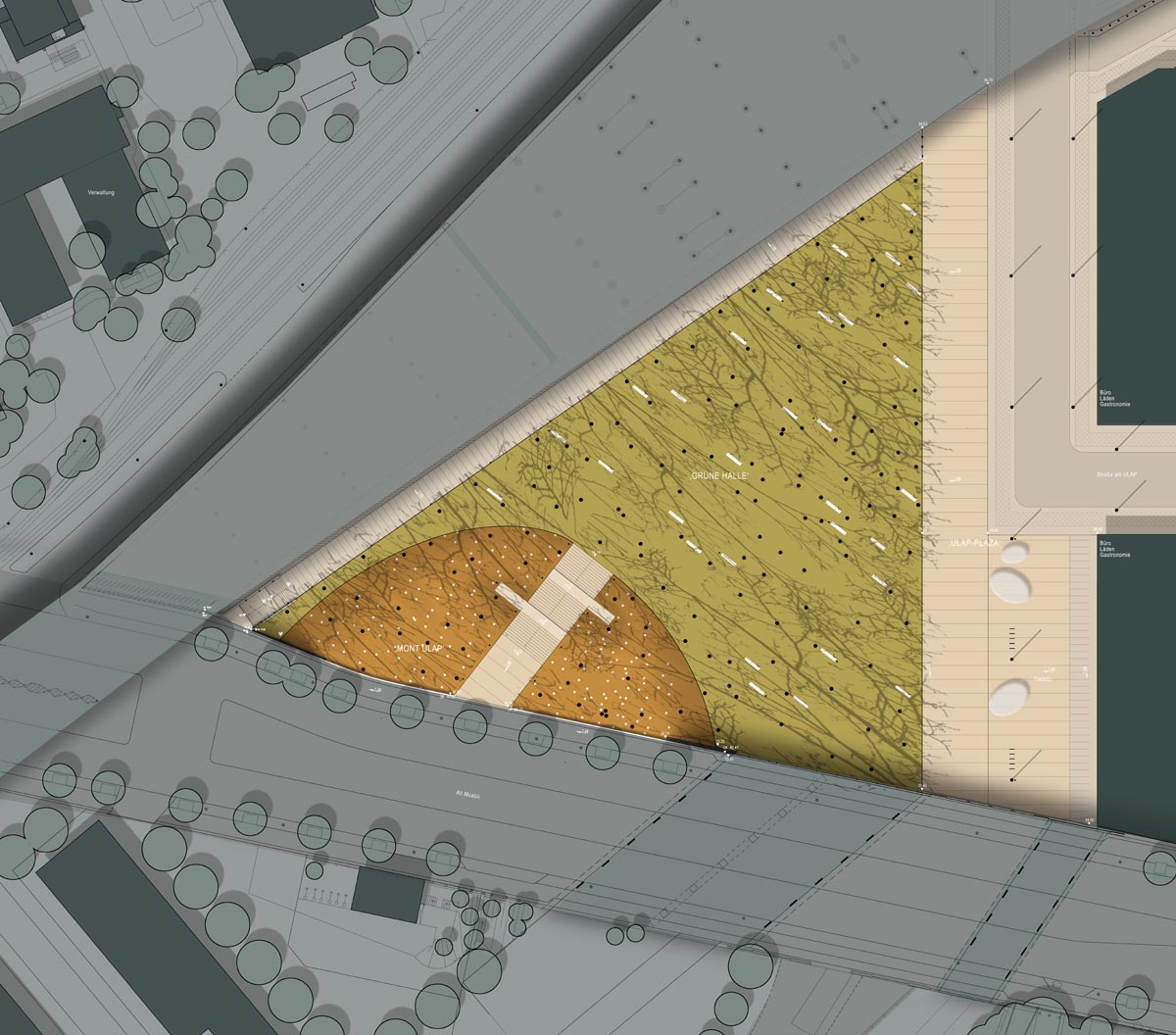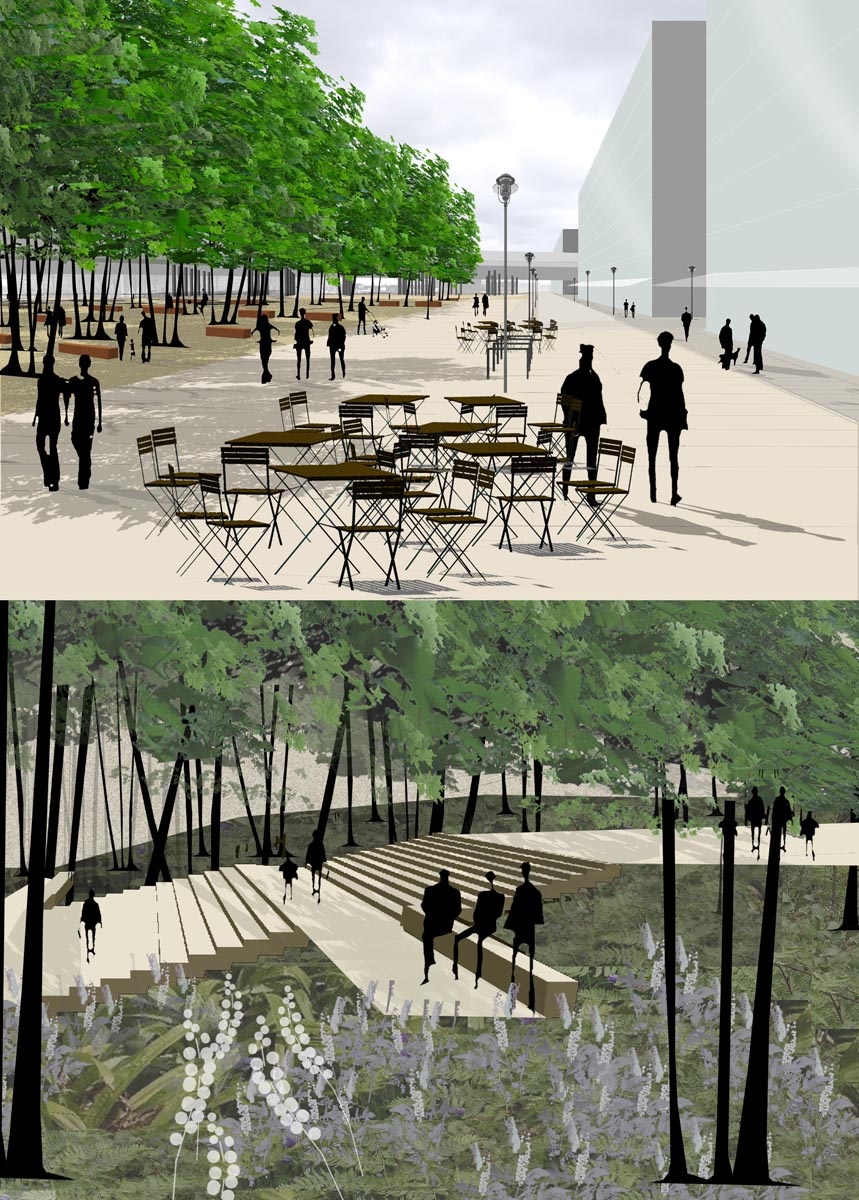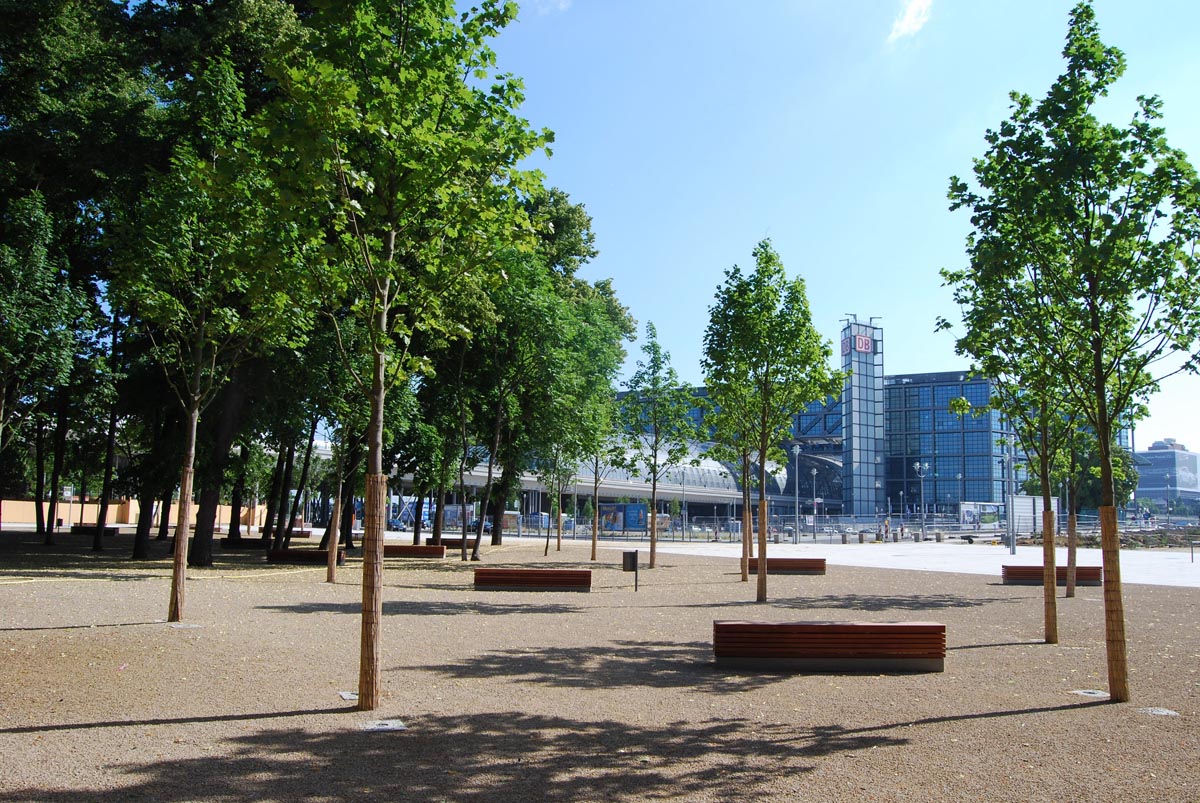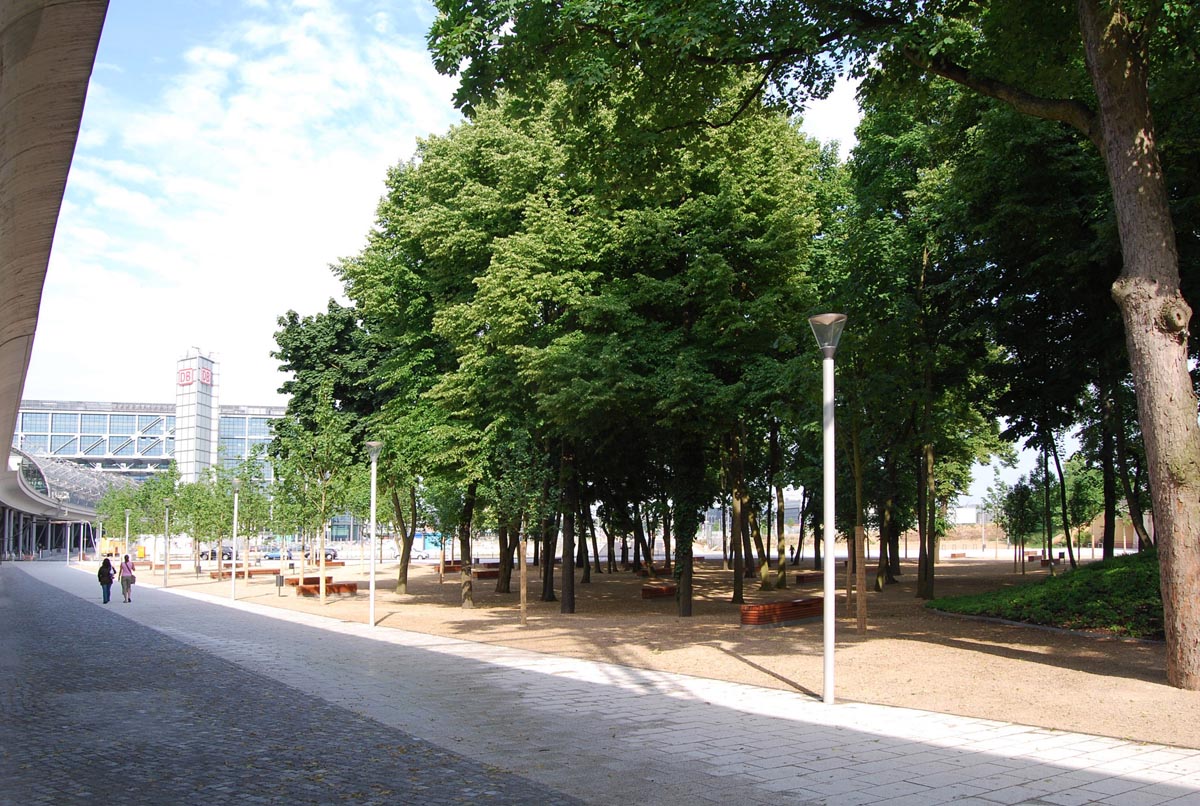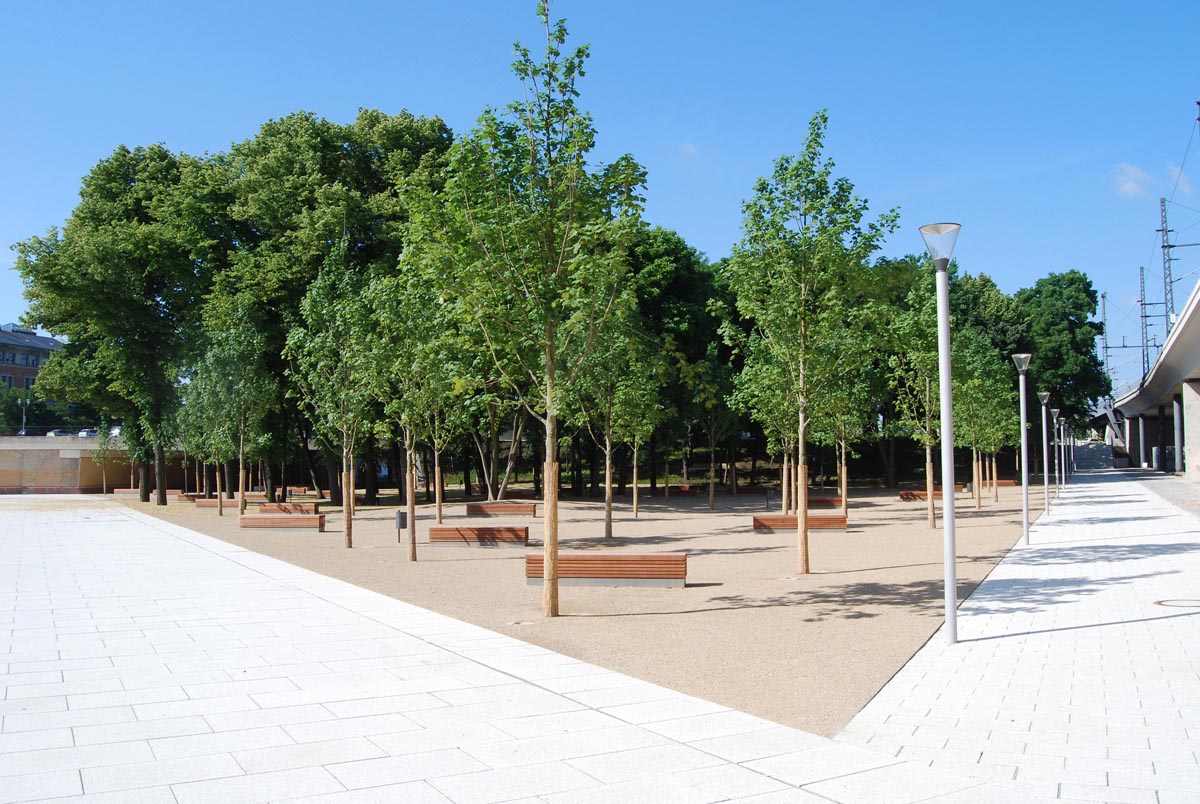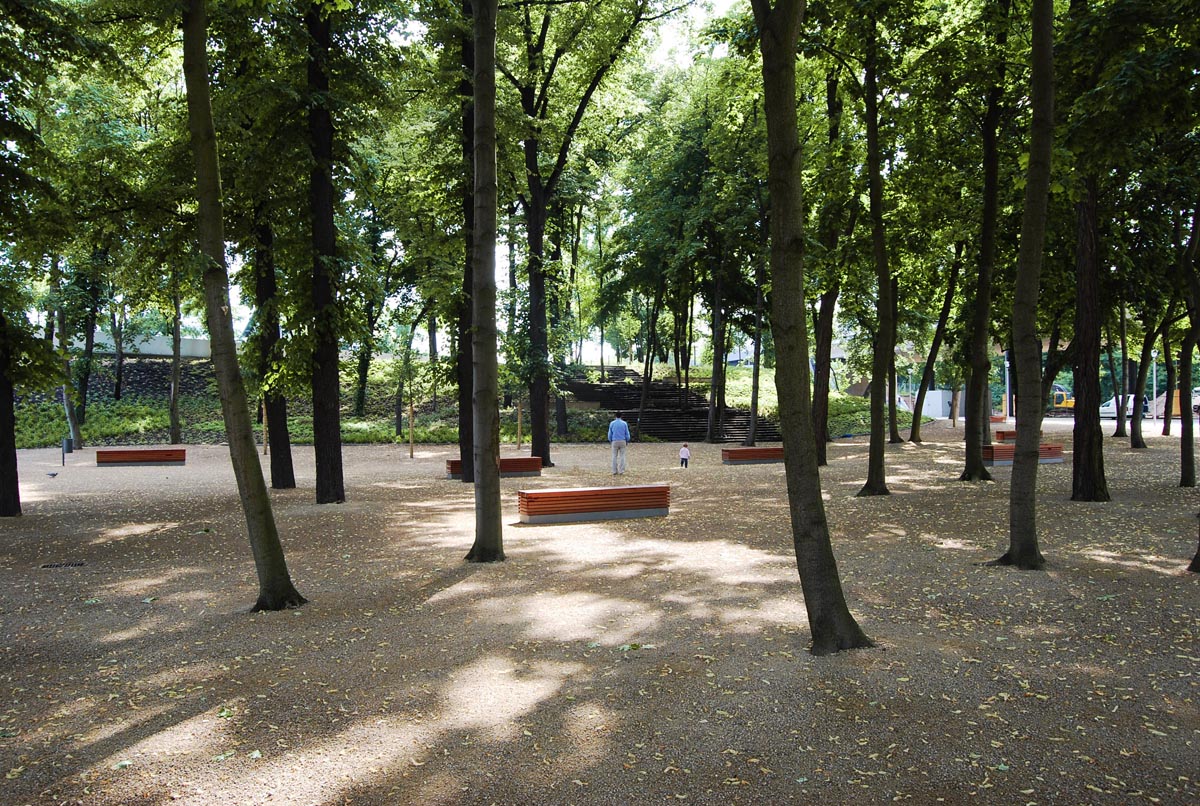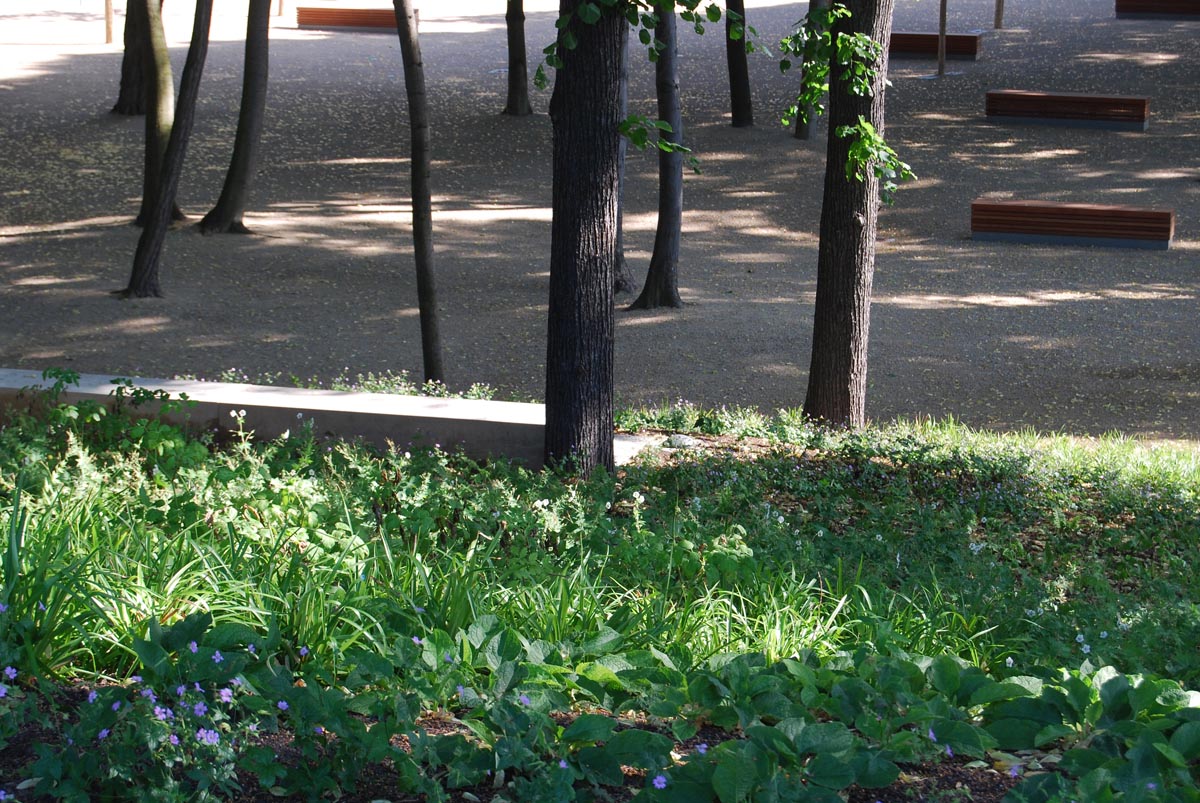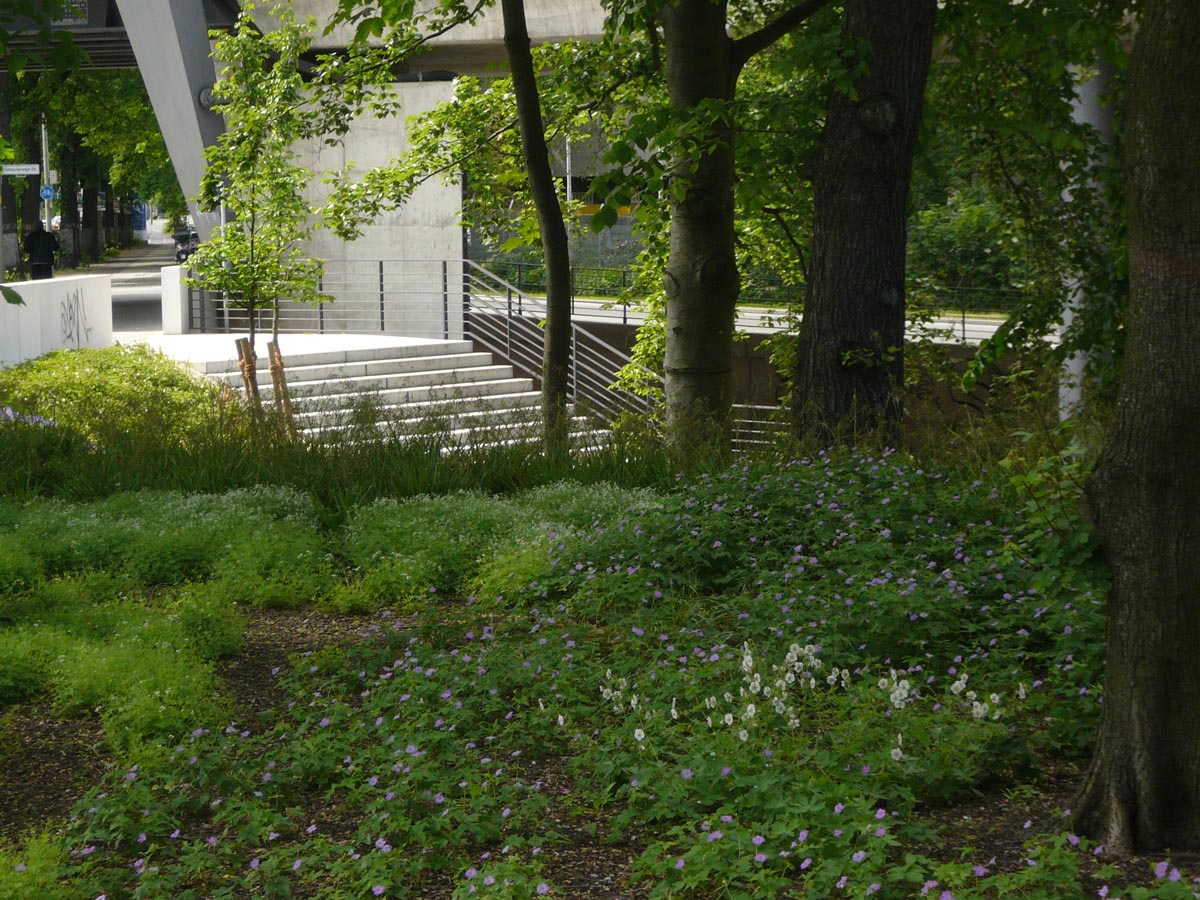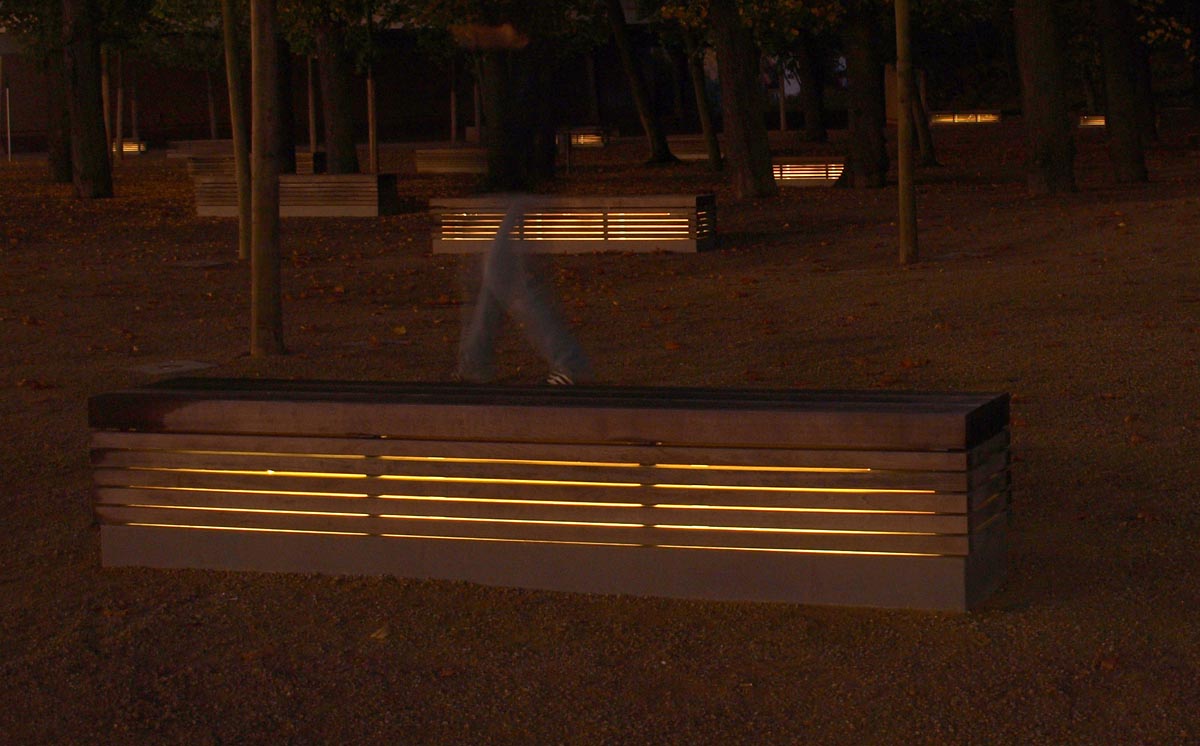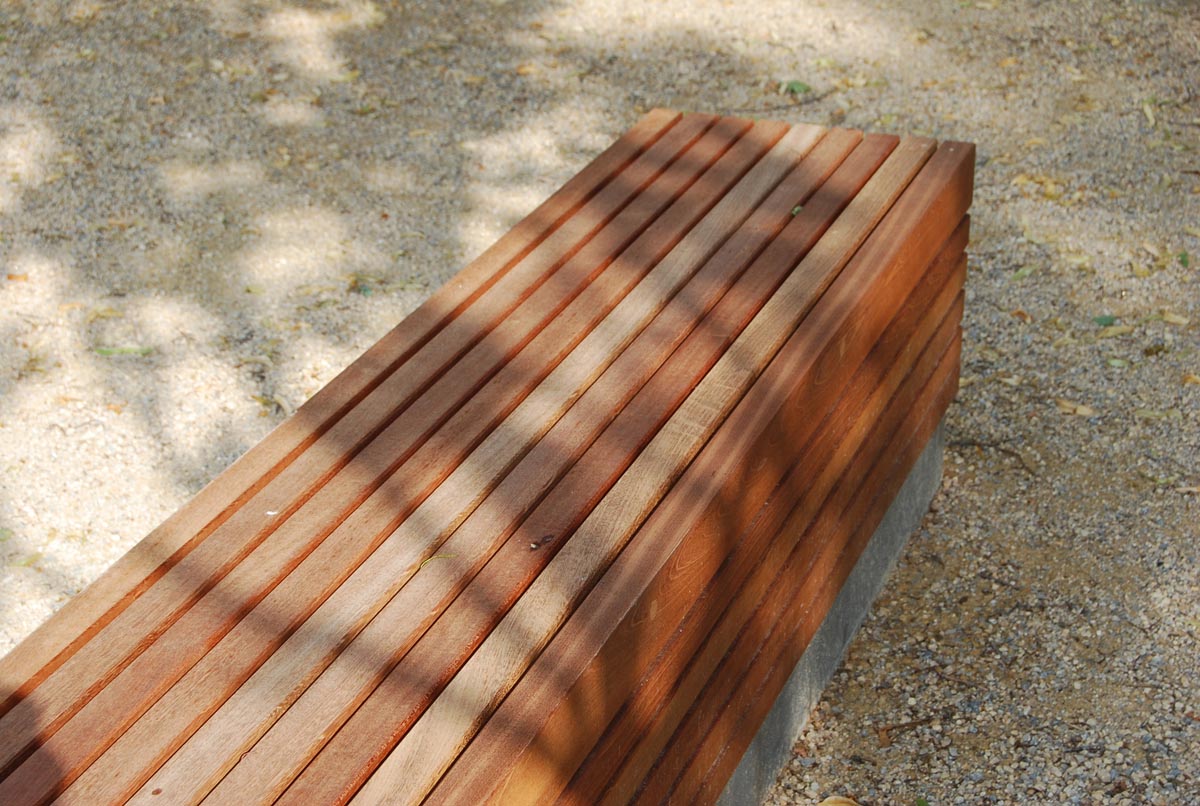Previous state
In 1879, when the nineteenth-century fervour for world’s fairs was spreading through European cities, Berlin opened a fair precinct called Universum-Landes-Ausstellungs-Park (ULAP). It was located in the present day Mitte district and the River Spree, which ran through the south-eastern tip of the fairgrounds, separated it from the Reichstag building. The perimeter was triangular, defined by the oblique meeting of the Alt-Moabit Avenue and Invalidenstraße and it was divided in two by the railway lines running into the nearby Lehrter station after passing over a viaduct four metres above the level of the park. Until shortly before the First World War the city’s main commercial, industrial and artistic fairs were held here but 1926 saw the construction, in the Charlottenburg-Wilmersdorf district, of the Funkturm, Berlin’s radio tower. A new trade fair precinct was then opened up around its base as a result of which the ULAP fairground fell into disuse.The abandoned fairground was bombed during the Second World War and the remains of its pavilions were definitively demolished in 1951. In the Cold War years the western sector of the parklands was occupied by a set of office buildings, while the eastern sector, which was nearer the Berlin wall, remained bare except for the spontaneous growth of woodland vegetation. As if nature had reconquered it, the old ULAP access stairway was invaded by the roots of the trees. After the reunification of Germany, however, the creation of the adjacent administrative district around the Reichstag meant that this neglected part of the park would suddenly acquire prominence and centrality. These qualities were reinforced in 2005 with the conversion of the old Lehrter railway station into the Hauptbanhof, Berlin’s Central Station.
Aim of the intervention
In 2005 the city’s executive body, the Senate of Berlin, called for entries in a competition for projects to adapt the former ULAP fair precinct to its new context, now defined by the newly-built administrative district and the recently-opened railway station. The intervention was to bring about a subtle ordering of the zone while respecting the natural character it had spontaneously acquired so that it would articulate, as a kind of green vestibule, the relationship between these two new realities. To this effect, an investment of over a million euros was earmarked for recovering the former access zone to the park, which was still presided over by the old stairway and given the name of ULAP-platz in memory of the fairground that had once existed there.Description
As if establishing a homothety with the former fairground that contains it, the new ULAP-platz has a triangular perimeter defined by the oblique meeting of the Hauptbanhof railway lines with Alt-Moabit Avenue. Both road and railway lines run at a height of four metres above the ground of the ULAP-platz and the difference in level is negotiated by the old stairway. Broken up by the roots of trees, its steps have been left as they were but a parallel stairway has been built beside it obeying the same rhythm of the stairway sections and landings. Both old and new stairways are built on what is known as "Mont-ULAP", a gentle hemispheroidal promontory, populated by the pre-existing trees and constituting one of the three sections into which the project area has been divided.The other two sections have been dubbed the “Green Hall” and ULAP-Square”. The former is a forest with topsoil over which a number of parallelpipedic benches have been distributed. These benches are covered in wooden slats separated by narrow cracks that emit light at night. All the trees, like those of “Mont-ULAP”, have been conserved and pruned. The paved, treeless ULAP-platz resolves the meeting of the fairground site with nearby buildings. A paved pathway follows the base of the raised viaduct leading to the Hauptbanhof.
Assessment
By means of subtle, contained operations that both tidy up the space and make it accessible, this intervention has been able to fix the site’s idiosyncrasy at a particular time in its own evolution, halfway between the splendour of ULAP and its subsequent decadence. This means that the place is pervaded with the memory of the historic event that generated it while also maintaining the beauty of the forest that was eventually to colonise it.David Bravo Bordas, architect
[Last update: 02/05/2018]


